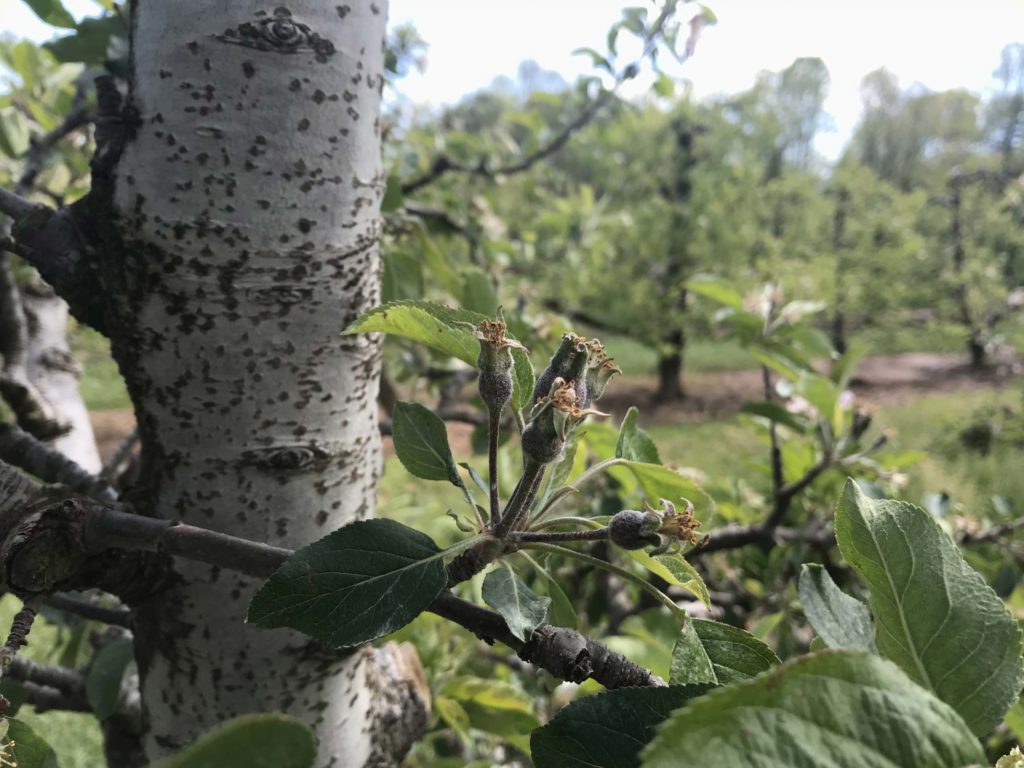Crop Load Management Update (4/21/2020): A Surplus of Challenges
go.ncsu.edu/readext?680334
en Español / em Português
El inglés es el idioma de control de esta página. En la medida en que haya algún conflicto entre la traducción al inglés y la traducción, el inglés prevalece.
Al hacer clic en el enlace de traducción se activa un servicio de traducción gratuito para convertir la página al español. Al igual que con cualquier traducción por Internet, la conversión no es sensible al contexto y puede que no traduzca el texto en su significado original. NC State Extension no garantiza la exactitud del texto traducido. Por favor, tenga en cuenta que algunas aplicaciones y/o servicios pueden no funcionar como se espera cuando se traducen.
Português
Inglês é o idioma de controle desta página. Na medida que haja algum conflito entre o texto original em Inglês e a tradução, o Inglês prevalece.
Ao clicar no link de tradução, um serviço gratuito de tradução será ativado para converter a página para o Português. Como em qualquer tradução pela internet, a conversão não é sensivel ao contexto e pode não ocorrer a tradução para o significado orginal. O serviço de Extensão da Carolina do Norte (NC State Extension) não garante a exatidão do texto traduzido. Por favor, observe que algumas funções ou serviços podem não funcionar como esperado após a tradução.
English
English is the controlling language of this page. To the extent there is any conflict between the English text and the translation, English controls.
Clicking on the translation link activates a free translation service to convert the page to Spanish. As with any Internet translation, the conversion is not context-sensitive and may not translate the text to its original meaning. NC State Extension does not guarantee the accuracy of the translated text. Please note that some applications and/or services may not function as expected when translated.
Collapse ▲The good news:
- Many southeastern orchards had a relatively strong return bloom in 2020 and we observed excellent weather for pollinator activity. Many blocks appear to have a moderate to heavy initial fruit set.
The not-so-good news:
- The 10-day weather forecast looks to be challenging for chemical thinning. The predicted cool temperatures, high winds, and frequent rainfall will limit opportunities to thin.
- Three frost/freeze events occurred over the past 10 days in some orchards. Growers reported flower/fruit damage at some sites, while others appear to be unaffected. In any case, fruit finish (russet) is a concern for the 2020 crop.
Here are a few things to consider regarding the post-bloom thinning window:
- The cool weather in the 10-day forecast is concerning for two reasons: 1) chemical thinner activity is reduced with low temperatures (less than 68 °F) and 2) trees are less susceptible to chemical thinners.
- There are very few days in the forecast that exceed 68 °F and the carbon balance model suggests that trees are in a sustained period of carbon surplus. Model recommendations suggest increasing the rate of chemical thinner. It is important to note, however, that some thinning chemistries (6-BA) do not perform well when applied at sub-optimal temperatures, even if applied at higher rates.
- 6-benzyladenine (6-BA, MaxCel®; Exilis® 9.5 SC, etc.) has poor thinning activity when daytime high temperatures are less than 68 °F. Be sure to apply on a day with sufficiently warm high temperatures…. otherwise, this material should stay on the shelf in your pesticide storage facility.
- NAA (Fruitone L®; PoMaxaTM; RefineTM, etc.) has some thinning activity at cooler temperatures. However, applying NAA at sub-optimal temperatures increases the chance of pygmy (a.k.a. “nubbins” or “mummies”) fruit development. If cool weather persists, NAA + carbaryl thinning programs may be more appropriate in some situations.
- Carbaryl has some thinning activity at sub-optimal temperatures. However, carbaryl alone is very unlikely to do a complete thinning job when on moderate/difficult-to-thin varieties.
- Ethephon (Ethrel; Ethephon 2; MotivateTM, etc.) has the reputation of being an erratic thinner. This compound is very temperature sensitive. Applying ethephon at cool temperatures will result in limited activity. As temperature increases, so does the thinning response.
- While sub-optimal temperatures are forecasted for the primary chemical thinning window (8-12 mm), I’d suggest that it is important to make a thinner application when you have any potential for a thinning window (temperatures in the upper 60’s, low winds, and low chance of rain). My concern is that if we wait for the ideal window, it may never come…. or will occur when fruit are greater than 20 mm. If the forecast holds, the next respectable window is early next week.
- If there is evidence/serious concerns regarding significant bud mortality due to cold damage, thinning should be delayed until active fruit growth is observed. Growing fruit are setting fruit. Orchards that sustained significant cold damage will be easier to thin than normal.
Another crop load management update will be posted on Sunday (4/26) with carbon balance model output for multiple sites.



